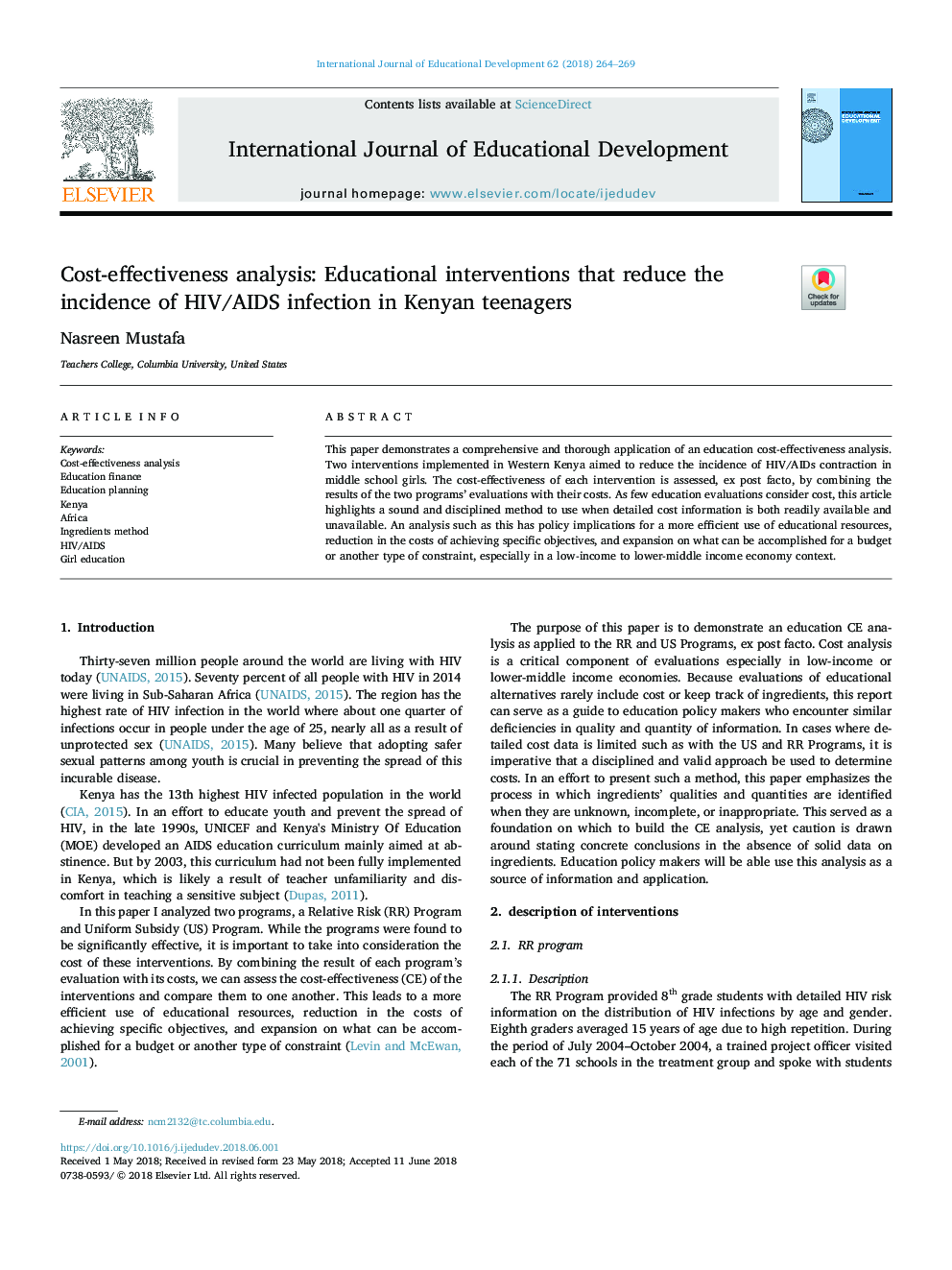| Article ID | Journal | Published Year | Pages | File Type |
|---|---|---|---|---|
| 6841086 | International Journal of Educational Development | 2018 | 6 Pages |
Abstract
This paper demonstrates a comprehensive and thorough application of an education cost-effectiveness analysis. Two interventions implemented in Western Kenya aimed to reduce the incidence of HIV/AIDS contraction in middle school girls. The cost-effectiveness of each intervention is assessed, ex post facto, by combining the results of the two programs' evaluations with their costs. As few education evaluations consider cost, this article highlights a sound and disciplined method to use when detailed cost information is both readily available and unavailable. An analysis such as this has policy implications for a more efficient use of educational resources, reduction in the costs of achieving specific objectives, and expansion on what can be accomplished for a budget or another type of constraint, especially in a low-income to lower-middle income economy context.
Related Topics
Social Sciences and Humanities
Social Sciences
Development
Authors
Nasreen Mustafa,
